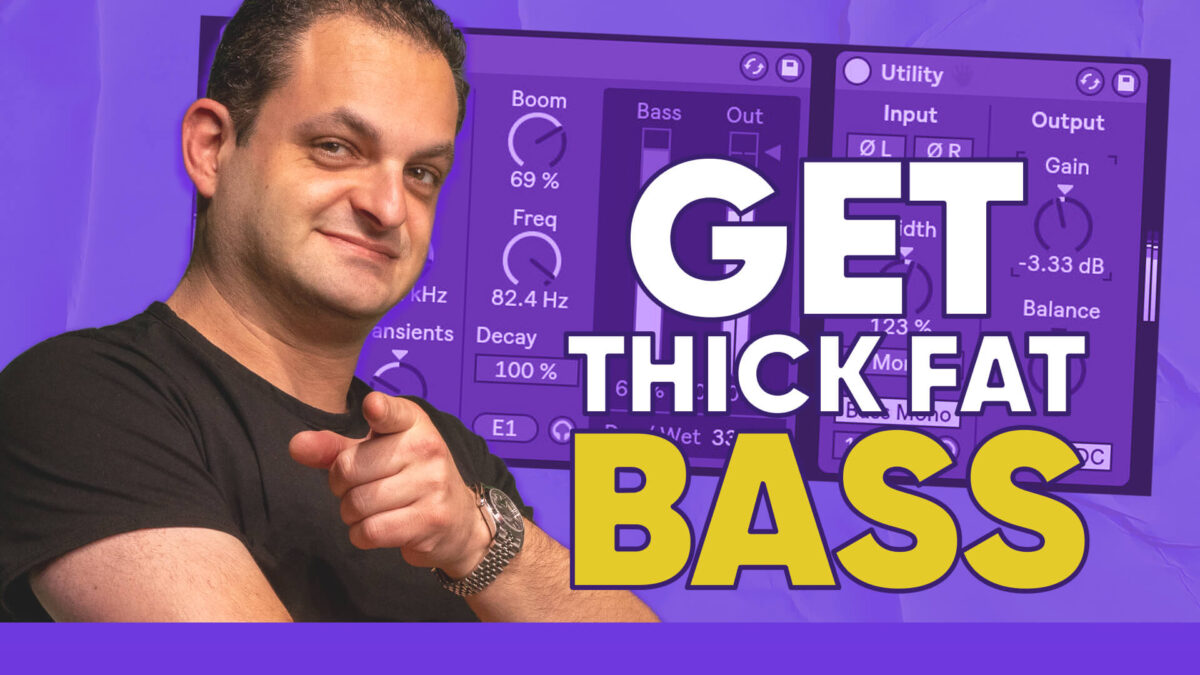
8 Proven Ways to Achieve a Fat and Thick Bass
Are you tired of weak and thin bass sounds in your music? Want to make your bass sound fat and punchy? As a music producer or a bass player, you know how important it is to have a thick and powerful bass and low end.
In this video, I will share 8 proven techniques to achieve a thick, fat, and powerful bass using Ableton Live that will make your music sound professional and polished. Whether you’re working on an electronic track, a hip-hop beat, or a rock song, these tips will help you take your low-end game to the next level.
Choosing the Right Sounds – It’s crucial that you choose the right bass sound or tone that matches well with your kick drum. Whether you’re working with a synthesized bass, a recorded electric bass, or a sampled instrument, ensure that it has the desired characteristics to deliver a fat and impactful low end and experiment with different sounds and timbres to find the perfect fit for your track.
Mono Your Low End – Putting your low end in mono or at least the lowest sub-frequencies can really help get things to sit better in your mix. You can also make space for wider elements and it just gives the track the solid foundation that you need.
Carve Space With EQ – Carving space with an EQ can help adjust frequencies so other elements in the mix are not clashing. With low-end you need to pay attention to the kick and bass relationship but also consider low-end from toms and snares so it’s not building up and making a muddy mess.
Layering – Layering basses can give you a nice fat bottom but give you the top end you need to cut through small speakers with your mixes. When layering be sure to carve space out for each low-end element.
Compression – Compression plays a vital role in taming the dynamics of the bass and ensuring a consistent and powerful low end. Use a compressor to even out the volume levels and control any excessive peaks. Be careful not to destroy your transients especially if the bass is a pluck type or stab bass sound. A slow attack time can preserve the initial transient, while a medium release time can help sustain the notes. Experiment with different compression ratios and settings to find the right balance between control and naturalness.
Saturation and Distortion – Using these tools can add harmonics and warmth to your low end. Be careful not to overdo it or you could kill some of the power and drive in your low end.
Add Effects – Adding effects is not common in low-end, however you might use it sparingly and creatively. I share some tips and things I’ve seen in dance music that might interest you!
Use A Limiter – Some people use limiters to even out the volume of a bass, although this is NOT recommended as much by me I felt I needed to include it, but I share some other ways to get to the same place!
Thanks for watching this video on creating fat low-end bass sounds in music production. Make sure to subscribe on YouTube for weekly tips and tricks.
